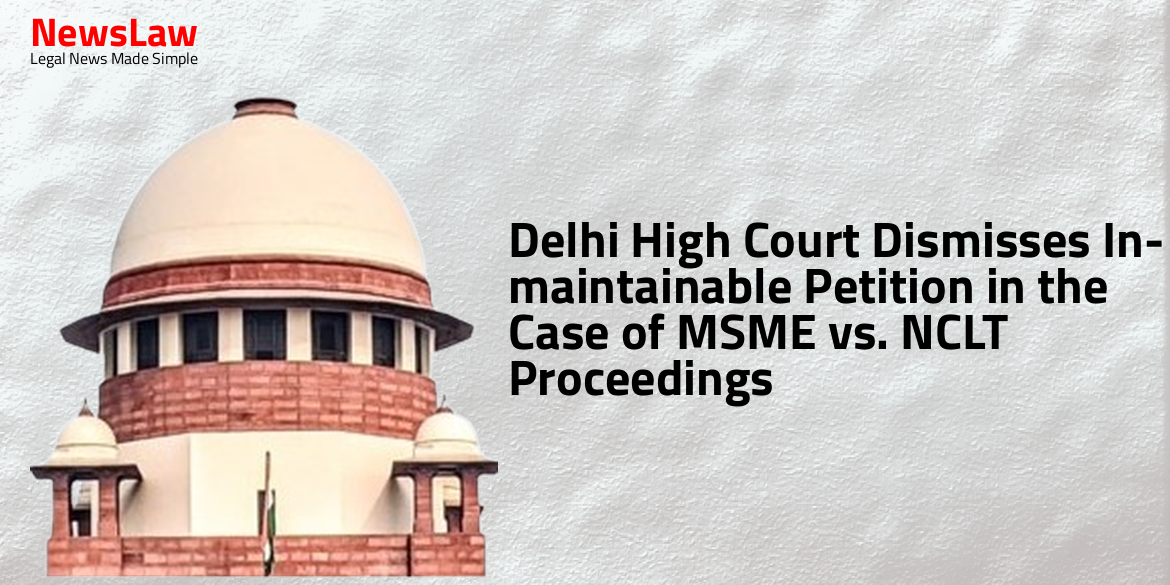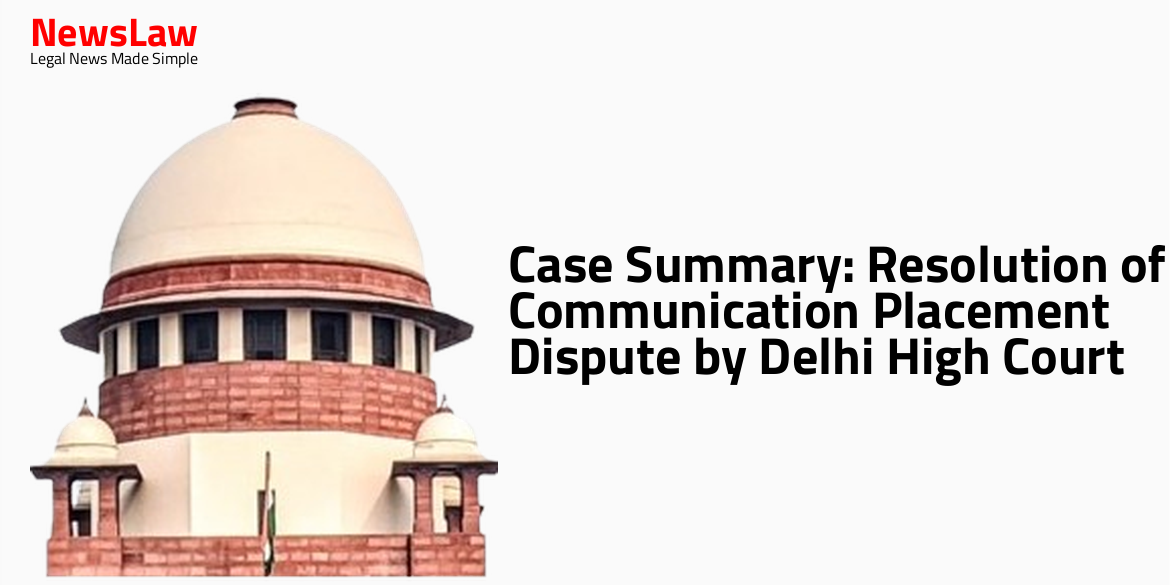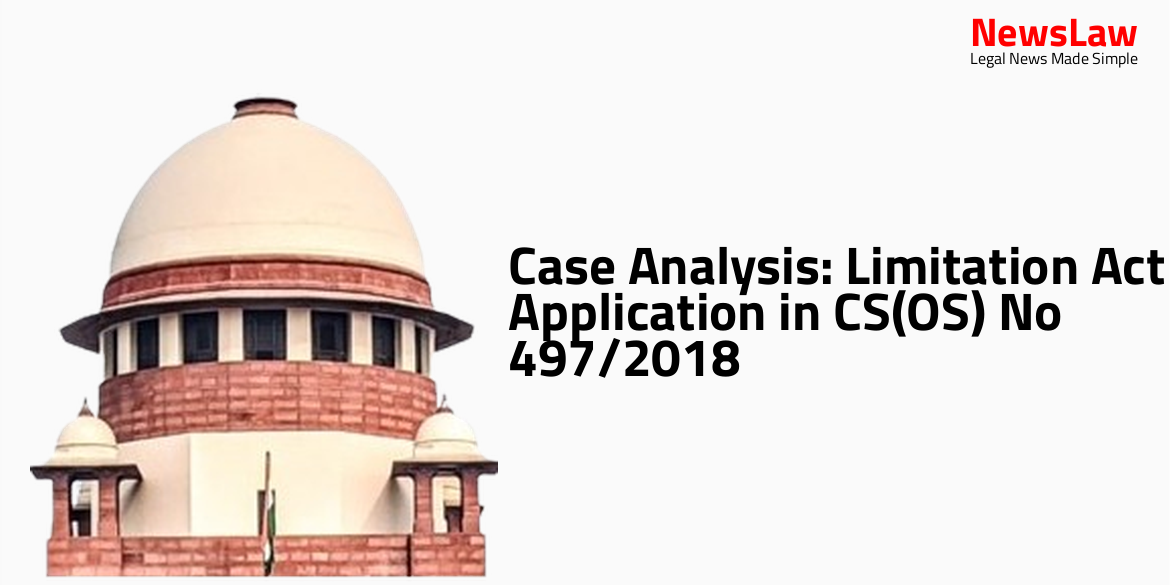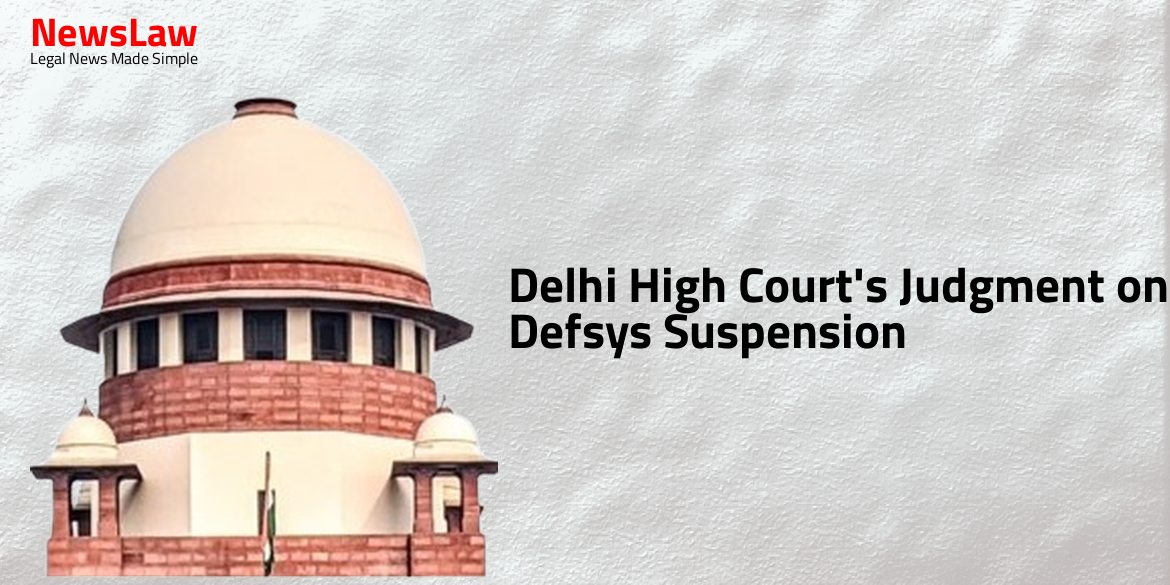In the recent judgment by the Delhi High Court, a petition has been dismissed as in-maintainable in the case involving a Micro, Small and Medium Enterprise (MSME) against the NCLT proceedings. The Court’s decision has significant implications on the resolution process and the rights of the parties involved. Let’s delve deeper into the details of this case and understand the legal standing post the acceptance of the Resolution Plan.
Facts
- Under Section 18 of IBC, it is the duty of the IRP to receive and collate all claims submitted by creditors.
- The amount claimed by the petitioner in the Arbitral proceedings is considered a ‘claim’ under the IBC.
- Claims must be submitted to the IRP or RP and included in the Information Memorandum.
- Section 30 of IBC requires the Resolution Plan to include payment of debts based on the Information Memorandum.
- RP must maintain an updated list of Claims for the Information Memorandum.
- The petitioner is entitled to dues only as provided in the Resolution Plan.
- After approval of the Resolution Plan, the Corporate Debtor is considered a ‘clean slate’ with obligations to pay dues as per the plan.
- Resolution Professional checks each Plan to ensure compliance with IBC provisions.
Issue
- The key issue before the Court is whether the present petition can be continued after the acceptance of the Resolution Plan.
- This raises the question of whether any legal standing or basis exists for the continuation of the petition post the acceptance of the Plan.
- The Resolution Plan being accepted signifies a significant step forward in the resolution process.
- Important considerations include the impact on the rights of the parties involved and the intent behind allowing or disallowing the continuation of the petition.
- The Court must carefully assess the relevant laws and precedents to arrive at a just and legally sound decision on this matter.
Arguments
- The applicant has cited judgments of Essar Steel India Ltd. Committee of Creditors vs Satish Kumar Gupta (2020) 8 SCC 531 and Ghanashyam Mishra and Sons Private Limited vs Edelweiss Asset Reconstruction Company Limited Civil Appeal No.8129 of 2019.
- The Supreme Court clarified that once a Resolution Plan is approved by the Adjudicating Authority, the claims mentioned in the Resolution Plan are frozen and binding on the Corporate Debtor, its employees, members, creditors, Central Government, State Government, local authority, guarantors, and other stakeholders.
- Any claims not included in the Resolution Plan are deemed extinguished, and no person is entitled to initiate or continue any proceedings regarding such claims.
- The petitioner’s petition under Section 34 of the Act is deemed non-maintainable and liable to be dismissed based on this clarification.
- The respondent has denied all the averments made in the Application filed by the petitioner.
- Notices for Publications and Claims were issued, but were not annexed in the present petition deliberately.
- Both the petitioner and respondent have filed objections under Section 34 of the Act regarding the Award.
- The respondent did not inform the petitioner about the NCLT proceedings against them after the Insolvency Petition was filed in 2019.
- The petitioner claims to be a Micro, Small and Medium Enterprise (MSME) registered under the Enterprises Development Act, 2006.
- The Notices published by the Insolvency Resolution Professional (IRP) were not known to the petitioner, keeping them unaware of the NCLT proceedings.
- The NCLT petition is still pending and has not been disposed of.
- The respondent argues that the present application is not maintainable and should be rejected.
Analysis
- The petitioner raised an objection about Notices published in newspapers not reaching him due to residing in a different location.
- Operational Creditors submit claims based on Public Notices, which become part of the Information Memorandum for Resolution Applicants.
- Award holders must submit their claims to the Interim Resolution Professional to be included in the Information Memorandum.
- Amounts determined under Arbitral Award and challenged under Section 34 of IBC qualify as ‘claims’.
- Insolvency proceedings initiated against the respondent resulted in a Resolution Plan accepted by a Successful Resolution Applicant.
- The Successful Resolution Applicant must be informed about all pending claims before the acceptance of the Resolution Plan.
- All claims must be submitted and decided by the resolution professional to ensure a clean slate for the Successful Resolution Applicant.
- The Apex Court emphasized the importance of the SRA starting the business of the Corporate Debtor on a clean slate.
- The NCLAT allowed admission of additional and belated claims of operational creditors for appropriate decision under Section 60(6) of IBC.
- Claims apart from those decided on merits by the resolution professional and Adjudicating Authority can now be decided by an appropriate forum in terms of Section 60(6) of the Code.
- Observations made by Calcutta High Court in the case of Sirpur Paper Mills Limited v. I.K. Merchants Pvt. Ltd. A.P. 550 of 2008 support this stance.
- Apex Court in the case of Ghanashyam Mishra and Sons Private Limited emphasized that Resolution Plan approved by the Adjudicating Authority is binding on the Corporate Debtor and its stakeholders.
- Any debt not included in the approved Resolution Plan shall stand extinguished.
- 2019 amendment to Section 31 of the I&B Code is clarificatory and declaratory in nature, effective from the date of the I&B Code coming into effect.
- All dues, including statutory dues owed to the government entities, not part of the Resolution Plan, shall stand extinguished.
- Successful Resolution Applicant cannot face surprise claims not part of the Resolution Plan.
- Once a Resolution Plan is accepted, all Claims against the Corporate Debtor are extinguished, and only debts in the Resolution Plan are taken up by the Successful Resolution Applicant.
- The implication of this proposition on the maintainability of a petition under Section 34 challenging the Award is questioned.
- The petitioner failed to lodge any claim in the Corporate Insolvency Resolution Process (CIRP).
- The Resolution Plan was accepted by the Committee of Creditors (CoC) and the NCLT Tribunal.
- The Resolution Professional (RP) issued a Public Announcement in two newspapers, providing notice of the insolvency proceedings against the respondent.
- The Supreme Court decisions in Essar Steel India Ltd. and Ghanashyam Mishra and Sons Private Limited have established that the successful Resolution Applicant assumes the corporate debtor with liabilities as specified in the Resolution Plan.
Decision
- The present petition is dismissed as it is no longer maintainable.
- All claims that are not mentioned in the collation of claims and the Resolution Plan will be extinguished.
- Pre-existing or undecided claims not included in the Resolution Plan will also be extinguished.
Case Title: INDIRA PRIYADARSHINI HYDRO POWER PVT LTD Vs. AKASH CONSTRUCTION (2024:DHC:3976)
Case Number: OMC-392/2017



